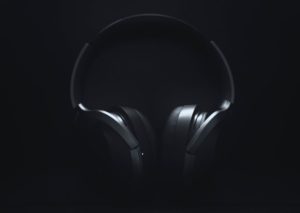The three concerti violinist Théotime Langlois de Swarte performs here are fine examples of the technical acumen of Vivaldi and two of his younger contemporaries, Locatelli and Leclair. The concerti by the latter two are considered to be from the period during which these composers fully developed their distinctive “voices” rather than simply imitating Vivaldi, Corelli, Somis, or others. As such, the album presents three distinct but interrelated approaches to the solo concerto form. These particular pieces also showcase de Swarte’s virtuosic talent as he tackles compositions by three of the premier violinists of this period.
Les Ombres chamber ensemble is well-matched with de Swarte. Throughout the album, the various voices of the ensemble—violins, violas, violoncellos, double bass, bass viol, theorbo, bassoon, harpsichord, and organ—blend with a fulsome but elegant balance amongst themselves and alongside the soloist. The conversational quality of Leclair’s Violin Concerto in D Major, Op. 10, No. 3 (tracks 11–13) is a fitting example of the fluency of this collaboration. Appropriate tonal warmth can be a problem in some historically informed performances, but that is not the case here in the slightest.
De Swarte is an exceptional talent. Period instruments are temperamental things, but de Swarte demonstrates a deep communion with his 1665 Jacob Stainer. “Communion,” I say, rather than “command,” because de Swarte never seems in conflict with the instrument but instead in deep conversation with a dear friend. In general, Baroque violins present several obstacles for the would-be virtuoso, but de Swarte overcomes them all in a way that feels natural and unforced. The proof of de Swarte’s virtuosic genius can easily be demonstrated by listening to the long solo in the finale of Locatelli’s Violin Concerto in E Minor, Op. 3, No. 8 (track 10, 3’00’’–7’21’’). This is certainly the most challenging solo on the album, littered with arpeggios, ricochets, multiple stops, and culminating in a twenty-eight measure “devil’s trill” (starting at 6’10’’). Honestly, I have never heard Locatelli played so well.
Related Posts
- Review: “Proust, Le Concert Retrouvé” – Théotime Langlois De Swarte, Tanguy De Williencourt
- Review: Mozart – Violin Concertos – Christoph Koncz, Les Musiciens du Louvre
- Review: “Baroque” – Nicola Benedetti, Violin
My sole complaint regarding the album is a mere trifle: loud breathing—here, I believe, on the part of the soloist—can detract from the musical experience in places. This is particularly the case throughout the Largo of RV 384 (track 6). In the recital hall, this would hardly be noticed; on a record of this quality, it stands out like a sore thumb. However, we listen to Gould in spite of his humming—a musically obnoxious, if quaint, idiosyncrasy—and can just as easily pardon this non-musical quirk in the face of what is otherwise excellent musicianship.
The musicians and the producers at harmonia mundi have outdone themselves here, producing an historically informed album with superb instruments and musicians in luscious audio quality.

Vivaldi, Leclair, Locatelli – Violin Concertos
Théotime Langlois de Swarte – Violin
Les Ombres
Harmonia Mundi, CD HMM902649
Read more classical music reviews or visit The Classic Review Amazon store
Follow Us and Comment:
[wd_hustle id=”HustlePostEmbed” type=”embedded”]












